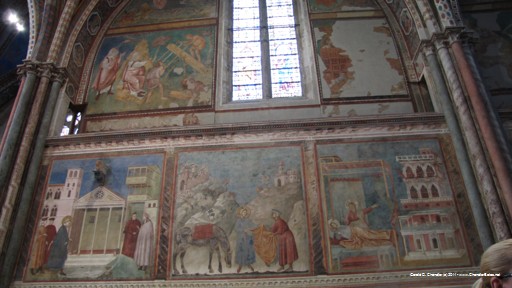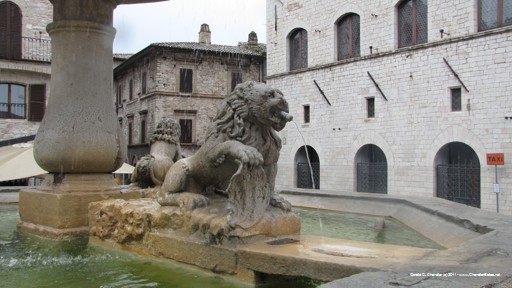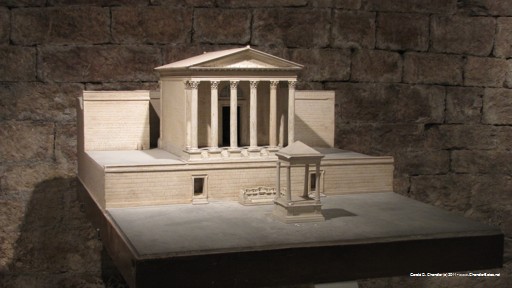Front Page | Home | Blog | Index | Site Map | Contact
![]() Bologna
Bologna
![]() Assisi
Assisi
![]() Perugia
Perugia
![]() Urbino
Urbino
![]() Ravenna
Ravenna
![]() Parma
Parma
![]() Milan
Milan
![]() Bergamo
Bergamo
![]() Florence
Florence
![]() Lucca
Lucca
![]() Siena
Siena
![]() Pisa
Pisa
![]() San Gimignano
San Gimignano
![]() Prato
Prato
![]() Rome
Rome
![]() Orvieto
Orvieto
![]() Viterbo
Viterbo
![]() Tivoli
Tivoli
![]() Ostia Antica
Ostia Antica

2011 Frontpages & Stays
2010 Fronpages & Stays
2009 Frontpages & Stays
2008 Front Pages
2007 Front Pages
2006 Front Pages
- 2006.12.12
- 2006.11.21
- 2006.11.04
- 2006.10.23
- 2006.10.09
- 2006.09.26
- 2006.09.10
- 2006.07.15
- 2006.05.30
- 2006.01.01

The Basilica of San Francesco, Assisi |
The obvious is sometimes not so obvious: St Francis of Assisi came from Assisi. Saint Francis died in what might be called the lower town of Assisi, officially known as Santa Maria degli Angeli, it is the town down in the valley below Mount Subasio. It is also the railhead, and in modern days the source of much of the labour for the tourist installations of Assisi proper.

Basilica of San Francesco windows |

Basilica of San Francesco Fresco |
Shortly after the death of Saint Francis, the first stone was laid in what was to become the Papal Basilica of San Francesco, the tomb of the saint, and a destination for Catholic pilgrims. It is in fact two churches, one built on top of the other, with the tomb of Saint Frances in the crypt of the lover church. Built on the edge of the town of Assisi, it forms a majestic spectacle for the tourist arriving from the valley below. as is clearly shown in the photo at the top of the page.
Our first "close" encounter with Saint Francis took place in Mexico in the early years of our travelling life. There we visited a small isolated church that was famous for having a cloister decorated with paintings depicting the life story of Saint Francis. Not being Catholic, we found ourselves quite ignorant of the lifestory of this 13th century icon, but started our journey of learning in that cloister.

Fountain in main square |

Extra-mural Assisi |
One thing we don't remember learning about, was the role played by Saint Francis in the life of another saint from Assisi, Saint Claire, founder of the order of the Clarissas. Claire wanted to be a Franciscan, but had to make do with being a Clarissa instead, founding the conventual order under the guidance and encouragement of Saint Francis.
Assisi, it seems, is a city in which multiples of two reign: two basilicas of San Francesco; two orders of monks/nuns originating here; and two sets of pilgrims to feed its tourist industry: the religious pilgrims and the art pilgrims. For the basilica of San Francesco is famed not only as the burial place of perhaps the most famous of all the Catholic saints, but also as the place that holds the largest number of surviving frescoes by the 13th century painter Giotto, his contemporaries like Cimabue, and his successors.

Assisi Fortress |

Roman Temple in Antiquity |
Our first time in a chapel completely covered in frescoes was, of course, in Florence. We remember standing open-mouthed at the glory of these enormous walls covered with brilliant color and spectacularly fine detail. We wondered what it must have been like to have an entire church frescoed in this way. We found the answer in Assisi, in the upper and lower basilicas of San Francesco. Even here, however, some damage has been done, some wonderful frescoes lost to architectural modifications as well as plain accident. But the impression, nonetheless, has to be very close to that perceived by a thirteenth-century church-goer. Every square foot of wall and (in the case of the lower basilica) ceiling space is packed with brightly colored frescoes of a freshness and elegance that belie their age.